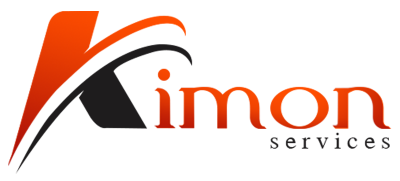IT support services outsourcing has become a crucial strategy for businesses looking to streamline operations and enhance efficiency. By entrusting their IT needs to specialised providers, organisations can focus on core business activities while benefiting from expert IT management.
IT support services outsourcing can include help desk support, network management, cybersecurity, and infrastructure management. These services can be provided remotely or on-site, tailored to businesses’ needs for efficiency and cost-effectiveness.
Outsourcing IT support offers several key advantages. It allows businesses to access a wider range of expertise without the overhead costs of maintaining an in-house IT team. This approach ensures scalable support, tailored solutions, and often, around-the-clock service availability, crucial for maintaining operational continuity.
This blog covers various types of IT support services, including managed IT services, IT consulting, remote IT support, cloud IT support, and IT help desk outsourcing. Each service type addresses specific business needs, from proactive network management to responsive help desk solutions.
Managed IT Services
Managed IT services refer to the proactive outsourcing of IT management responsibilities and functions to enhance operational efficiency and reduce costs. Businesses partner with managed service providers (MSPs) to oversee their IT infrastructure, including network monitoring, cybersecurity, cloud computing, and help desk support.
Benefits of Outsourcing Managed IT Services
Outsourcing IT support services offers numerous advantages, especially for small to medium-sized businesses (SMBs). It allows companies to access specialised expertise without maintaining an in-house IT team, reducing overhead costs associated with full-time employees. MSPs ensure continuous monitoring and maintenance, enhancing system reliability and security. This proactive approach minimises downtime and improves overall operational efficiency, crucial for maintaining competitiveness in today’s digital landscape.
Examples of Successful Implementations
Small Business Efficiency Boost
- A small marketing firm outsourced its IT support to a local MSP, resulting in a 30% reduction in IT-related expenses. The MSP implemented a cloud-based infrastructure that streamlined data management and enhanced collaboration among remote teams.
Cybersecurity Enhancement
- A healthcare provider partnered with an MSP specialising in cybersecurity to mitigate risks associated with patient data. Through regular audits and proactive security measures, the MSP ensured compliance with HIPAA regulations, safeguarding sensitive information against potential breaches.
Remote IT Support
Remote IT support involves the provision of IT assistance and troubleshooting without the need for physical presence. It utilises technology such as remote desktop software and secure connections to access and resolve IT issues from a remote location. This approach enables timely resolution of technical issues while minimising downtime for businesses.
Advantages of Choosing Remote IT Support
- Cost Efficiency: Remote IT support eliminates the need for on-site visits, reducing travel costs and associated expenses. It offers flexible pricing models, making it cost-effective for small businesses to access expert IT services without investing in a full-time IT team.
- Timely Response: With remote IT support, businesses benefit from rapid response times. IT technicians can diagnose and resolve issues promptly, often within minutes, ensuring minimal disruption to daily operations.
- Accessibility and Convenience: Remote IT support provides businesses with access to a diverse pool of IT specialists and expertise regardless of geographical location. It offers 24/7 support, catering to global operations and ensuring continuous service availability.
Comparison with On-Site IT Support Solutions
When comparing remote IT support with on-site solutions, the following considerations arise:
- Response Time: Remote IT support offers quicker response times due to immediate access to systems, whereas on-site support may require scheduling and travel time.
- Cost: On-site support can be more expensive due to travel costs and higher hourly rates, whereas remote support offers predictable pricing structures.
- Coverage: Remote IT support can cover a broader geographic area and support multiple locations simultaneously, enhancing scalability compared to on-site solutions limited to specific locations.
Cloud IT Support
What is Cloud IT Support?
Cloud IT support refers to IT services delivered via cloud computing infrastructure. It involves leveraging cloud-based technologies to provide IT management, monitoring, and support remotely. This approach allows businesses to access IT resources, applications, and services over the internet, rather than relying solely on on-premises solutions.
Key Features and Benefits of Cloud-Based IT Support Services
- Scalability and Flexibility: Cloud IT support offers scalable solutions that can easily accommodate business growth or fluctuations in demand. Businesses can quickly scale resources up or down as needed without major infrastructure investments.
- Cost Efficiency: By outsourcing IT support services to the cloud, businesses can reduce capital expenditures associated with hardware and maintenance. Pay-as-you-go pricing models ensure cost efficiency, with businesses paying only for the resources they use.
- Remote Accessibility: Cloud IT support enables remote access to IT services and applications from any location with internet access. This accessibility enhances workforce mobility and collaboration, crucial for modern remote work environments.
- Enhanced Security and Reliability: Cloud service providers (CSPs) invest heavily in security measures, offering robust data protection, encryption, and regular backups. This ensures business continuity and protects against data loss or breaches.
Considerations for Migrating to Cloud IT Support
Migrating to cloud IT support requires careful consideration of several factors:
- Data Security: Evaluate the security measures and compliance standards of potential CSPs to ensure data protection and regulatory compliance.
- Integration with Existing Systems: Assess compatibility and integration capabilities with existing IT infrastructure and applications to minimise disruption during migration.
- Cost Analysis: Conduct a cost-benefit analysis to compare the total cost of ownership (TCO) of cloud solutions versus on-premises alternatives, considering both short-term and long-term financial implications.
IT Help Desk Outsourcing
Definition and Role of IT Help Desk Outsourcing
IT help desk outsourcing involves delegating technical support responsibilities to external service providers. These providers manage IT help desk functions such as troubleshooting, issue resolution, and user support remotely. Outsourcing allows businesses to leverage specialised expertise and streamline IT operations while focusing on core business activities.
Types of IT Help Desk Outsourcing Models (Offshore, Nearshore, Onshore)
- Offshore Outsourcing: Offshore IT help desk outsourcing involves contracting services to providers located in distant countries. It offers cost savings due to lower labour costs but may involve challenges related to time zone differences and cultural barriers.
- Nearshore Outsourcing: Nearshore outsourcing involves partnering with providers in neighbouring or nearby countries. It balances cost efficiency with closer proximity, facilitating easier communication and potentially reducing cultural and logistical challenges.
- Onshore Outsourcing: Onshore IT help desk outsourcing involves hiring providers within the same country or region. It offers advantages such as language compatibility, similar business practices, and easier regulatory compliance, albeit at potentially higher costs compared to offshore solutions.
Factors to Consider When Selecting an IT Help Desk Outsourcing Provider
- Expertise and Experience: Evaluate the provider’s experience in handling IT help desk operations, industry-specific knowledge, and track record with similar businesses.
- Service Level Agreements (SLAs): Review SLAs to ensure they align with business needs, covering aspects like response times, issue resolution metrics, and uptime guarantees.
- Security Measures: Assess the provider’s security protocols, data protection measures, and compliance with industry standards to safeguard sensitive information and mitigate cybersecurity risks.
- Cost and Pricing Models: Compare pricing structures, including hourly rates, flat fees, or subscription-based models, to determine cost-effectiveness and budget alignment.
- Customer Support and Feedback: Gather feedback from references or reviews to assess customer satisfaction levels, support responsiveness, and overall service quality.
IT Service Management (ITSM)
IT Service Management (ITSM) outsourcing involves delegating the management and delivery of IT services to external providers. These providers are tasked with ensuring the effective planning, delivery, and support of IT services to meet the business’s needs and objectives. Outsourcing ITSM allows businesses to leverage specialised expertise, reduce operational costs, and enhance service delivery efficiency.
ITSM Frameworks and Best Practices
- ITIL (Information Technology Infrastructure Library): ITIL is a widely adopted framework that outlines best practices for ITSM. It focuses on aligning IT services with the needs of the business, improving service quality, and optimising resource utilisation through defined processes and roles.
- COBIT (Control Objectives for Information and Related Technologies): COBIT provides a governance and management framework that helps businesses achieve strategic goals through effective IT governance, risk management, and compliance. It emphasises aligning IT with business objectives and ensuring IT processes are efficient and secure.
- ISO/IEC 20000: This international standard specifies requirements for an IT service management system (ITSM), providing a framework for organisations to demonstrate their ability to deliver consistent and high-quality IT services. It focuses on service delivery, relationship management, and continual improvement.
How ITSM Enhances Operational Efficiency
- Improved Service Delivery: ITSM outsourcing ensures standardised processes and workflows, leading to consistent and reliable service delivery. This results in enhanced user satisfaction and operational efficiency.
- Cost Optimisation: By outsourcing ITSM, businesses can reduce operational costs associated with maintaining in-house IT teams and infrastructure. Service providers offer flexible pricing models that align with business needs, allowing for cost predictability and optimisation.
- Focus on Core Competencies: Outsourcing ITSM enables businesses to focus on core competencies and strategic initiatives rather than day-to-day IT management tasks. This strategic shift enhances overall productivity and business agility.
- Scalability and Flexibility: ITSM providers offer scalable solutions that can adapt to business growth or changing demands. This scalability ensures that IT services can quickly scale up or down as needed, supporting business agility and responsiveness.
Conclusion
We’ve examined various outsourcing options tailored to meet diverse business needs. From remote IT support to comprehensive IT service management (ITSM), each solution offers distinct advantages for optimising operational efficiency and enhancing service delivery.
Outsourcing IT support services presents numerous benefits for businesses looking to streamline operations and focus on core competencies. Key advantages include cost savings through efficient resource allocation, access to specialised expertise for enhanced service quality, and scalability to adapt to evolving business demands.
For businesses considering IT support outsourcing, now is the time to leverage these strategic advantages. By partnering with reputable IT support providers, businesses can ensure seamless service delivery, proactive IT management, and enhanced customer satisfaction. Take the next step towards optimising your IT infrastructure and driving business growth by exploring the best outsourced IT support for small business needs.
FAQs
What are the benefits of outsourcing IT support services?
Outsourcing IT support services offers cost savings, access to specialised expertise, scalability, and enhanced focus on core business activities. It allows businesses to benefit from 24/7 support, improved service levels, and reduced operational risks through efficient resource management.
How to choose the best IT support provider?
Choose an IT support provider based on their experience, expertise in your industry, service level agreements (SLAs), customer reviews, and scalability. Ensure they offer proactive monitoring, security measures, and clear communication channels to meet your business needs effectively.
What are managed IT services?
Managed IT services involve outsourcing proactive management of IT infrastructure and functions to improve operational efficiency and reduce downtime. Services typically include network monitoring, data backup, cybersecurity, and help desk support, offered under predictable pricing models.
Is remote IT support reliable?
Yes, remote IT support is reliable when provided by experienced professionals using secure remote access tools. It offers quick response times, cost-effectiveness, and allows businesses to resolve issues remotely without requiring on-site visits, ensuring minimal disruption to operations.
What is IT help desk outsourcing?
IT help desk outsourcing involves delegating technical support and issue resolution to external service providers. It aims to enhance user satisfaction by providing timely and efficient solutions, typically offered through various outsourcing models like offshore, nearshore, and onshore.
How much does outsourced IT support cost?
Outsourced IT support costs vary based on services required, provider expertise, and business size. Small businesses may spend around £50 to £150 per user per month for basic support, while larger enterprises with comprehensive IT needs might invest significantly more.
What should I consider before outsourcing IT support?
Consider factors like your business requirements, provider reputation, security protocols, scalability options, SLAs, and communication channels. Evaluate costs versus benefits, ensure alignment with your IT strategy, and assess the provider’s ability to meet compliance and regulatory standards.
What are the advantages of IT outsourcing?
IT outsourcing offers access to specialised skills, cost savings, scalability, improved efficiency, and enhanced service levels. It allows businesses to focus on core competencies, mitigate risks, and leverage advanced technologies without significant upfront investments.
What are the trends in IT support outsourcing?
Current trends include increased adoption of cloud-based solutions, emphasis on cybersecurity, AI-driven automation for support tasks, hybrid IT environments, and growing reliance on managed service providers for end-to-end IT management.
How can small businesses benefit from IT support outsourcing?
Small businesses benefit by gaining access to advanced IT expertise, cost-effective solutions, 24/7 support, and scalable services that grow with their needs. Outsourcing IT support enables them to focus resources on core business functions while improving operational efficiency and customer service.






